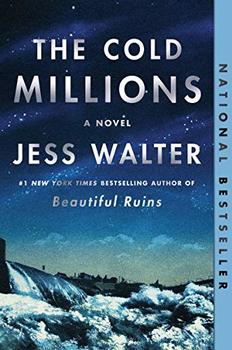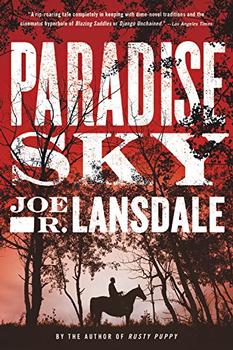Summary | Excerpt | Reviews | Beyond the book | Read-Alikes | Genres & Themes | Author Bio

A Novel
by Brian HartThe Bully of Order opens in 1886 among a group of workers in Washington state's lumber yards (see 'Beyond the Book'). A staccato style and a first-person plural voice allow for a mixture of observations, dialogue, and imperative statements, all in italics. "This is war but bloodier," one worker asserts, introducing a note of menace compounded by the biblical echo of "In the beginning there was a whistle…The whistle tells us to move."
Out of that tumult of voices emerges more coherent first-person narration from Dr. Jacob Ellstrom, watching the harbor from his second-floor apartment. He, too, depicts this place as wild and lawless; he would love to protect his wife Nell and young son Duncan from it, but his mercurial brother Matius shares in the town's spirit of violence. Crisis comes quickly for the Ellstrom family when a woman dies during a breech birth Jacob is overseeing. This blunder reveals he is not a qualified doctor; indeed, Matius calls him "an open and deplorable fraud." Jacob goes missing, and when Nell asks after him around the town, it becomes clear that he was deep in debt. "I don't want to be married to an impostor," Nell vows. She sells Jacob's medical equipment and moves out to Matius' claim, even though her brother-in-law has a history of abusive behavior.
When the threat of violence materializes, Nell and twelve-year-old Duncan must part ways and find their own paths to safe and happy lives. Duncan comes under the influence of Bellhouse, a foul-mouthed union leader, and starts dating the mill owner's daughter, Teresa. Bad temper, a family curse, returns to haunt Duncan, and he commits two crimes that force him to go on the run. All along, Jacob has been watching his son's progress from afar; it seems his long-ago prediction, from the first chapter, may well be correct: "In my darkest hours I believed myself to be somehow poisonous and that I should never have had children."
As the novel speeds into the twentieth century, various voices, some first-person and some third-person, provide shifting commentary on the happenings of this frontier harbor. The frequent change in point of view is only occasionally disorienting and helps create a 360-degree view of the town's population and events.
Hart continues inserting new voices – my favorite does not come until Book Three: Oliver, Teresa's brother, whose almost autistic first-person narration is a fascinating mixture of lists and free association. This passage, which echoes Faulkner's The Sound and the Fury, shows his surprising connections between phrases (with adolescent male humor): "Toiletries scattered around the washbasin. Disorder breeds disorder. Breeding is disorder, breeding breeds disorder. Nothing orderly about it except that most fundamental notch and peg of it. Gophers and gopher holes. The thought of rodent sex, then human sex."
The last third of the novel, a tense manhunt, surpasses earlier sections. Jacob joins Duncan's fugitive journey and the two have some narrow escapes. With the sheriff plus 100 men and dogs after them, it is uncertain whether they will survive their ordeal.
Hart keeps readers rooting for his flawed characters right to the end. However, there is 15 years' worth of plot crammed into the novel; I wondered if it should have focused on a narrow time period, or on just one crime. Nell rather disappears after Book 1; there is good reason for this, but it still felt like a plot hole. Also, I should warn sensitive readers that there is raw language and sexuality, including crude brothel talk. It might not be to everyone's taste.
Hart's language is also striking in a good way. His metaphors are memorable, as in "he could still smell the river through the trees, tangy like rotting berries or the stale sweat of a whore" and "I tasted the brined earth of mortality, and I didn't like it." Hart's unusual vocabulary often sent me scurrying for a dictionary: torporific, rubiginous, and pother are real words, if archaic; but as far as I can tell Hart made up "troggy," "twabbling," and "blabbardly."
The Bully of Order resonates for its strong theme of sons cursed to repeat their fathers' mistakes. The violent, doom-laden atmosphere brings Cormac McCarthy to mind. The novel's very title portrays Fate (Order) as a cruel taskmaster, an idea echoed in the first-person plural narration: "There's an engine in the heart of the world, and it's built to kill us." Yet Nell offers Duncan – and readers – a more hopeful perspective: "No matter what happens…you get to choose how you act. In the end that might be all the choice you'll ever get, but it's a lot."
![]() This review was originally published in The BookBrowse Review in November 2014, and has been updated for the
October 2015 edition.
Click here to go to this issue.
This review was originally published in The BookBrowse Review in November 2014, and has been updated for the
October 2015 edition.
Click here to go to this issue.

If you liked The Bully of Order, try these:

by Jess Walter
Published 2021
The author of the #1 New York Times bestseller Beautiful Ruins delivers another "literary miracle" (NPR) - a propulsive, richly entertaining novel about two adventure-seeking brothers, the enemies who threaten them, and the women who reveal to them an unjust world on the brink of upheaval.

by Joe R. Lansdale
Published 2017
A rollicking novel about Nat Love, an African-American cowboy with a famous nickname: Deadwood Dick.
Your guide toexceptional books
BookBrowse seeks out and recommends the best in contemporary fiction and nonfiction—books that not only engage and entertain but also deepen our understanding of ourselves and the world around us.